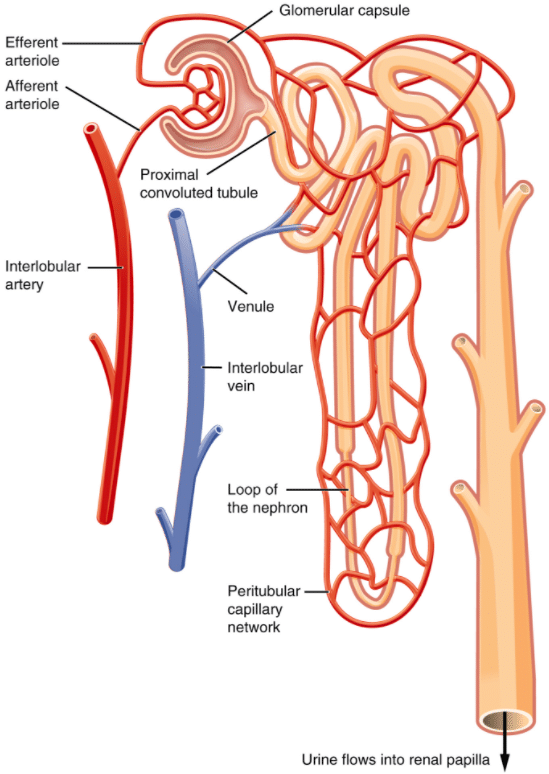
Within its biology and biochemistry topics, the MCAT will test you on kidney anatomy and the inner workings of the renal system, so it’s a good idea to start brushing up on your physiology knowledge as soon as possible.
Ready to get started? Check out our video lesson on MCAT kidneys and renal system basics, and keep reading for a quick review of kidney anatomy and how the renal system works.
MCAT Kidneys and Renal System Review
The renal system, also known as the urinary system, consists of the kidneys, ureters, bladder, and the urethra. Its purposes are to eliminate wastes from the body, regulate blood volume and blood pressure, control levels of electrolytes and metabolites, and regulate blood pH.
Each kidney is made up of millions of functional units called nephrons, where urine is formed. As we walk through this process, refer to the diagram below to locate different areas in the nephron’s anatomy.
Nephron Anatomy

Filtration
The process of filtration begins in the Bowman’s capsule, where blood is filtered from the circulatory system into the tubules through a semipermeable membrane. This filtration is governed by the relationship between hydrostatic and osmotic pressures in the nephron.
Maximizing Filtration
Filtration is governed by differentials in the pressures mentioned above…so what will maximize glomerular pressure? Well, we affect pressure through dilation and constriction. Therefore, a maximally dilated afferent arteriole and a maximally constricted efferent arteriole is going to maximize the pressure differential. This, in turn, will give us the greatest net filtration.
Reabsorption
Reabsorption is movement of material from the kidney tubule back into the blood plasma. What is not reabsorbed is excreted as urine (we’ll talk more about that in a second).
The amount of filtrate that comes out from the glomerulus into the Bowman’s capsule is huge: It’s almost 180 liters a day.
As you probably realize, we usually only pee about two or three liters a day. So, we are reabsorbing a ton of stuff throughout that kidney tubule after it’s initially filtered out. We’re doing a lot of reabsorption throughout the kidney tubule.
Excretion
Everything that is not reabsorbed eventually exits the urethra. This stage is called excretion. And excretion equals filtration minus reabsorption.
And that’s the renal system in a nutshell!
More MCAT Study Materials
Are you on the market for an MCAT study schedule? More free MCAT lessons? Maybe this MCAT Kidneys and Renal System review was less of a “review” than you’d hoped…don’t worry! Our official MCAT test prep has you covered.
For those of you who already have Magoosh’s MCAT test prep, you can also learn more about the kidneys in our “Transit Across Membrane: Active A” and “Sleep Apnea & Insomnia” videos!
Whatever you’re looking for, check out the links below for everything MCAT:







